A journey through the world's most revered cultural institutions is more than just a sightseeing exercise; it's a profound engagement with human history, artistic genius, and the very fabric of our planet. These temples of knowledge, from soaring art galleries to sprawling halls of science, serve as essential anchors to the past and vital signposts for the future. They are places where one can stand inches from an ancient civilization's most cherished artifact or gaze upon the brushstroke that changed art forever. Planning a pilgrimage to these cultural meccas, however, requires careful thought, particularly when it comes to the logistics of international travel.
Securing your place in the queue for a prized exhibition is just one step. The process of getting to your destination city, especially the initial stages of the trip, should be seamless. For those flying in, knowing where to find reliable long-term parking near airport facilities can make a huge difference in the overall travel experience. Modern travelers recognize the value of securing their vehicle's safety while they are immersed in the wonders of the world, and services like ParkingNearAirports.io provide comprehensive options, including airport parking reservations and helpful parking discounts, allowing you to start your cultural immersion without unnecessary stress over transit logistics. Once these practicalities are sorted, the true adventure begins as you step into the hallowed halls of the world's most popular museums.
What essential, awe-inspiring treasures must every visitor prioritize in these 10 temples of global history?
Musée du Louvre – Paris, France
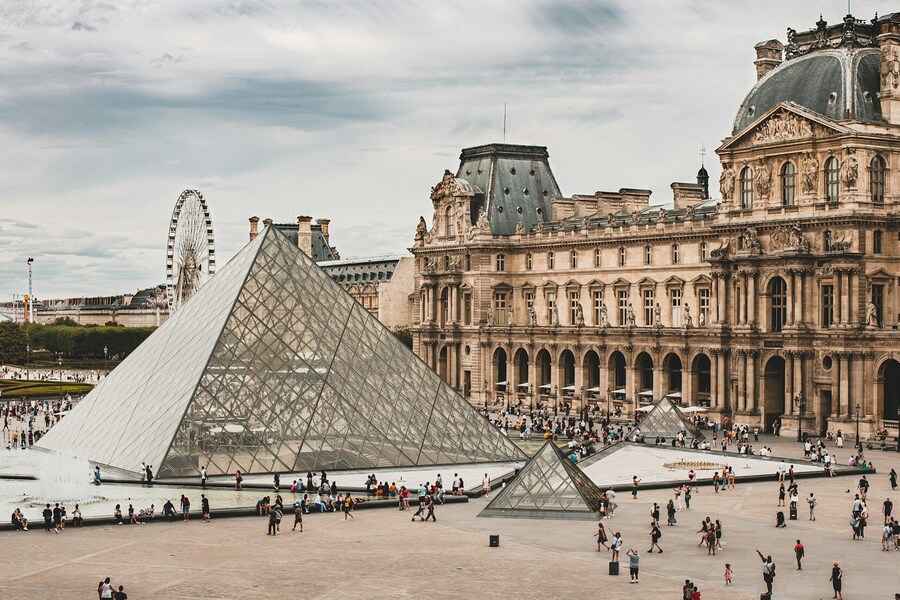
Source: Mika Baumeister/Unsplash
Housed in a former royal palace in the heart of Paris, the Louvre is universally acknowledged as the world's largest and most visited art museum. Its collection spans Western art from the Middle Ages to the mid-19th century, alongside an extraordinary wealth of ancient civilizations' artifacts. The sheer scale of the museum dictates that a single day, or even several, can only scratch the surface. While the draw of the Italian Renaissance is undeniable – with Leonardo da Vinci's Mona Lisa remaining the magnetic focal point – visitors should allow ample time to explore the majestic Denon Wing, home to the monumental Winged Victory of Samothrace and the exquisite Venus de Milo. Beyond these icons, the galleries dedicated to Egyptian antiquities offer a mesmerizing corridor back through millennia. The museum's striking glass pyramid entrance, a controversial addition in the 1980s, now stands as a beloved symbol of its fusion of classical heritage and contemporary architectural ambition. A smart approach to the Louvre involves prioritizing a few key areas and utilizing a time-slot reservation to manage the inevitable crowds, transforming what could be an overwhelming visit into a focused, awe-inspiring experience.
Vatican Museums – Vatican City
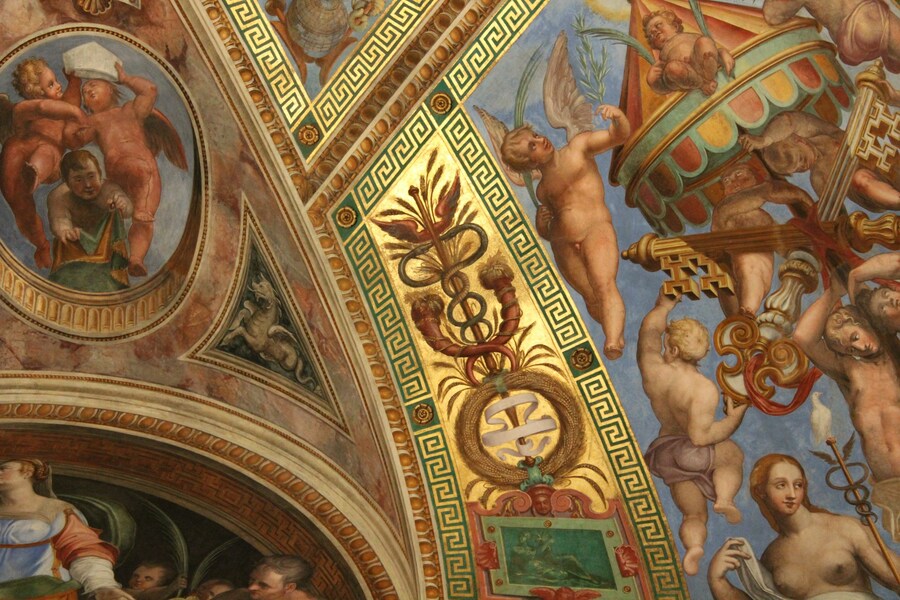
Source: Mili K./Unsplash
Nestled within the walls of the world's smallest sovereign state, the Vatican Museums present an incomparable collection amassed by the Popes over centuries, featuring masterpieces of painting, sculpture, and other artifacts. The culmination of any visit is, of course, the Sistine Chapel, where Michelangelo's breathtaking frescoes – the ceiling depicting scenes from Genesis and the altar wall's The Last Judgment – represent the pinnacle of High Renaissance artistic achievement. Before reaching this sacred space, visitors traverse a stunning sequence of galleries, including the Raphael Rooms, decorated with frescoes by the master and his pupils, and the vast Pio-Clementine Museum, home to classical sculptures, such as the Laocoön and His Sons. The museums are a testament not only to artistic development but also to the profound patronage of the Church. Given the site's popularity and religious significance, a modest dress code is enforced, and booking tickets well in advance is essential to navigate the high volume of pilgrims and art enthusiasts who flock here daily.
British Museum – London, England
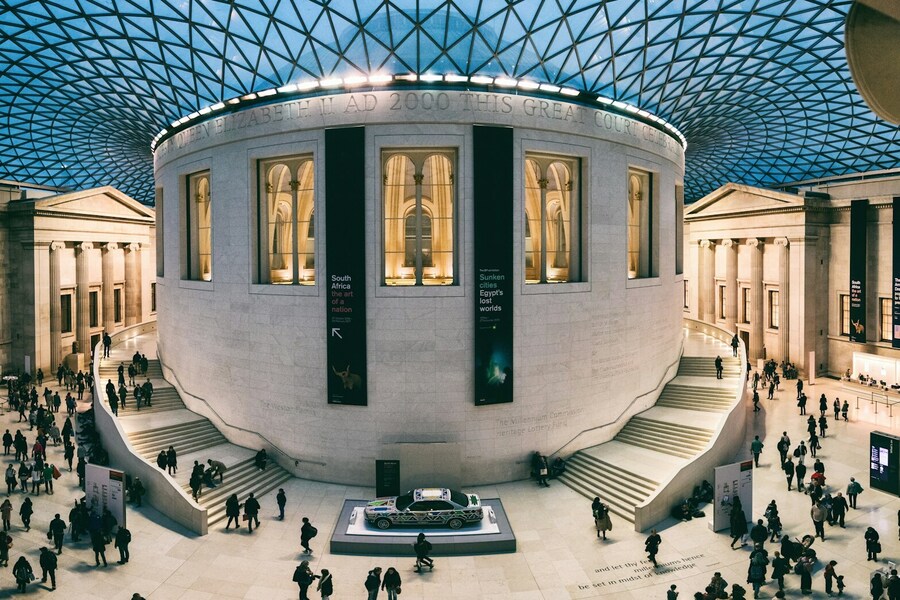
Source: Christian Lendl/Unsplash
Standing proudly in London's Bloomsbury area, the British Museum is dedicated to human history, art, and culture. Its permanent collection, comprising over 8 million works, is among the largest and most comprehensive in existence, and its free admission policy ensures its enduring accessibility. The museum chronicles the story of human culture from its beginnings to the present, with treasures sourced from every continent. Essential stops include the Rosetta Stone, which unlocked the secrets of Egyptian hieroglyphs, the Parthenon sculptures (Elgin Marbles) from ancient Greece, and the dramatic figures from the Sutton Hoo ship burial, offering a rare glimpse into Anglo-Saxon royalty. The colossal Great Court, with its stunning glass roof designed by Norman Foster, acts as a magnificent central hub, guiding visitors to exhibitions that span diverse civilizations from ancient Assyria and Rome to the indigenous cultures of the Americas. The sheer breadth of the collection makes it an unparalleled educational resource.
Natural History Museum – London, England
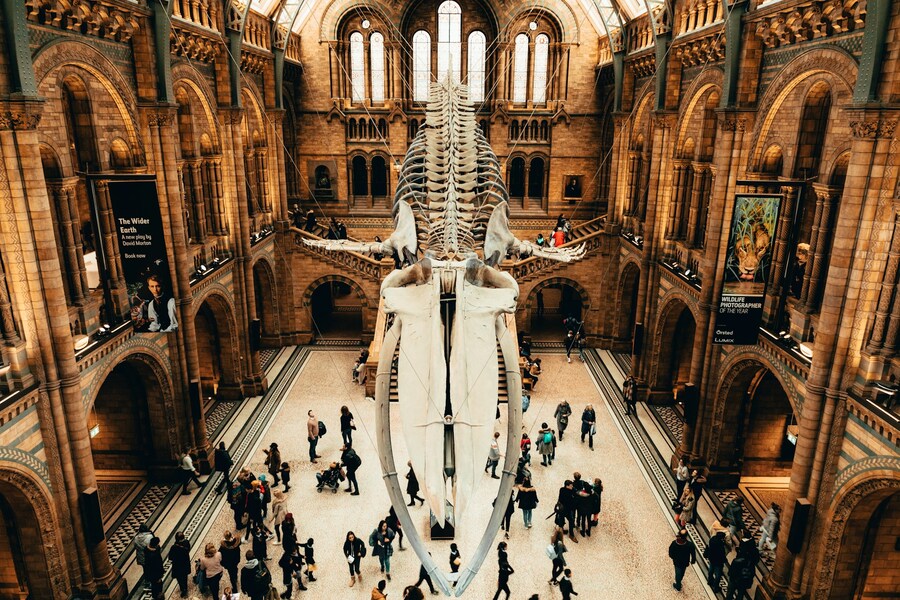
Source: Sheng L/Unsplash
The Natural History Museum in London is an architectural wonder and a leading scientific research center specializing in taxonomy, conservation, and mineralogy. Its grand, cathedral-like structure, often referred to as a "Cathedral of Nature," is as much an attraction as the collections themselves. Key exhibitions are organized into zones: the Blue Zone covers dinosaurs and the diversity of life; the Red Zone delves into the Earth's history, from volcanology to the planet's internal forces; and the Green Zone explores evolution and the vast array of organisms. The museum's centerpiece is a magnificent blue whale skeleton, "Hope," suspended in the Hintze Hall, symbolizing the urgent need for conservation. This institution offers a captivating, family-friendly journey through natural science, making the mysteries of the natural world accessible and inspiring for visitors of all ages.
National Museum of China – Beijing, China
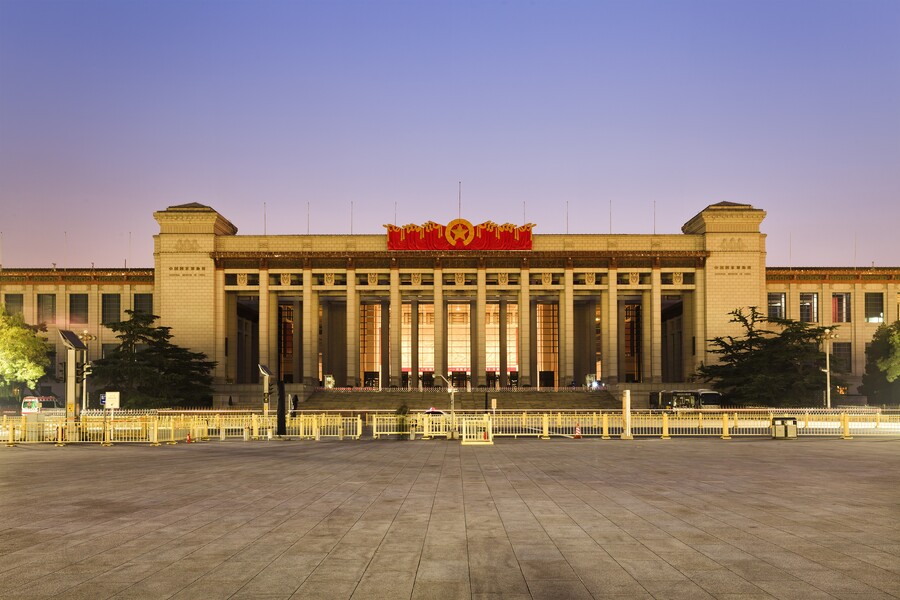
Source: Google Search
Positioned on the eastern side of Tiananmen Square in Beijing, the National Museum of China is among the largest museums in the world and serves as a vital repository of Chinese history and culture. Its mission is to educate on the country's artistic and historical heritage, stretching from the Yuanmou Man of 1.7 million years ago to the end of the Qing dynasty and beyond. The museum's extensive and invaluable collection features an incredible array of national treasures, including the bronze vessel known as the Simuwu Ding, one of the heaviest bronze pieces in the world, and the spectacular Han Dynasty jade burial suits. Visitors navigate through meticulously curated halls that tell the sweeping narrative of China's rise and evolution. The sheer scale of its halls and the depth of its collection require a strategic visit plan, with particular focus on the exhibition areas detailing the ancient periods and revolutionary history.
Metropolitan Museum of Art – NYC, United States
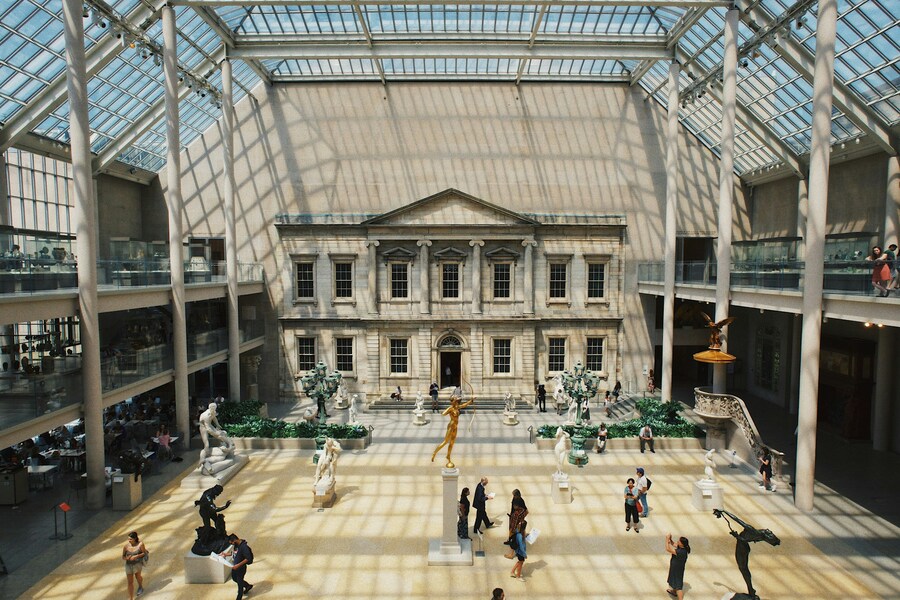
Source: Robert Bye/Unsplash
Affectionately known as "The Met," the Metropolitan Museum of Art in NYC is one of the world's largest and finest art museums. Its collection holds over 2 million works, spanning 5,000 years of global culture, from prehistory to the present. Located along Fifth Avenue's Museum Mile, the Met offers an encyclopedic experience, covering nearly every facet of human creativity. Visitors can wander through the Egyptian wing, marveling at the spectacular Temple of Dendur, or transition to the European paintings gallery to study Vermeers and Rembrandts. The American Wing provides a profound look at the nation's artistic heritage, while the extensive collection of arms and armor and the vibrant Asian art galleries offer rich comparative cultural experiences. The Met's open-air roof garden, featuring rotating modern installations and offering panoramic views of the city skyline, provides a much-needed respite from the density of the indoor collections.
China Science and Technology Museum – Beijing, China
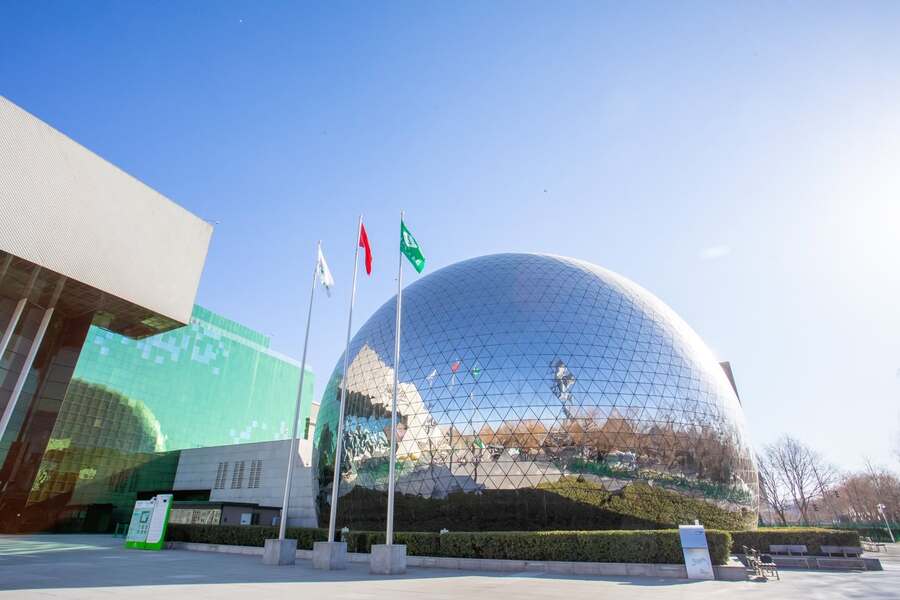
Source: Google Search
A departure from traditional history and art, the China Science and Technology Museum in Beijing serves as the nation's premier institution for public science education. It's characterized by its highly interactive and engaging exhibits across multiple permanent halls dedicated to different scientific disciplines, including physics, astronomy, information technology, and aerospace. The museum is especially popular with families and students, fostering an appreciation for innovation and scientific inquiry. Exhibits often feature hands-on experiments and cutting-edge technology showcases, reflecting China's ambition in the global science and technology arena. Visitors are invited to explore complex concepts through play, from virtual reality experiences to exploring models of space stations and discussing the future of robotics.
Nanjing Museum – Nanjing, China

Source: Alston Chia/Unsplash
As one of the earliest and most significant museums established in China, the Nanjing Museum holds a central place in the study of Chinese archaeology and art, particularly focusing on the cultural heritage of Jiangsu Province. The museum complex is vast, divided into multiple exhibition halls, including the Historical Museum, the Art Museum, and the Digital Museum. A highlight is its collection of gold and silver articles and ceramics, offering an extraordinary window into the craftsmanship and aesthetic sophistication of imperial dynasties. The museum also features a Republic of China style street in one of its halls, offering an immersive, theatrical journey back to the period. Like other major Chinese cultural institutions, advance booking is critical for securing admission to fully appreciate its extensive exhibits without the constraint of peak-hour queues.
American Museum of Natural History – NYC, United States
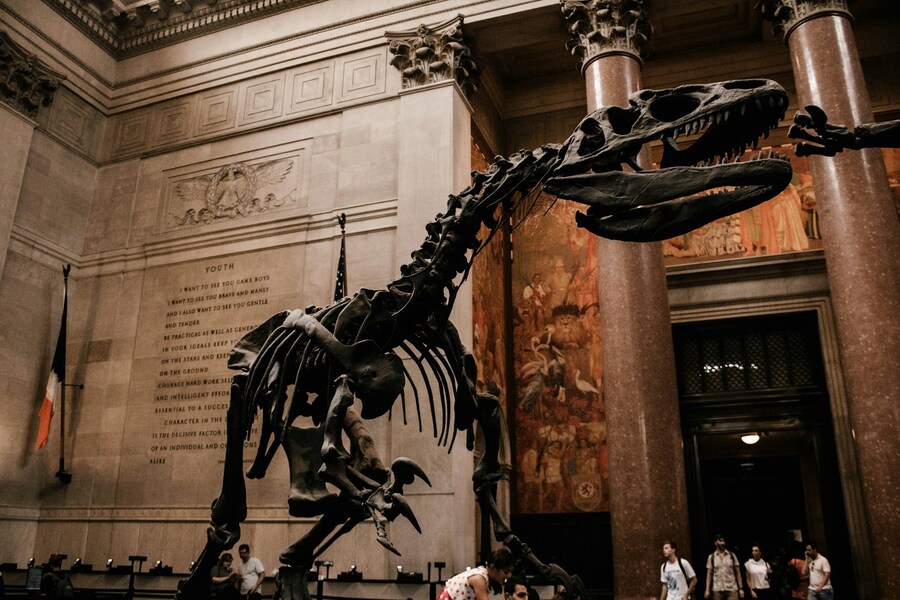
Source: Aditya Vyas/Unsplash
On the Upper West Side of Manhattan, the American Museum of Natural History (AMNH) is famed for its exhibitions and scientific collections. Its vast halls are dedicated to the natural world, human cultures, and the cosmos. The museum is instantly recognizable for its impressive dioramas of global ecosystems and for its world-class paleontology collection, featuring one of the largest displays of dinosaur and fossil specimens anywhere. The Milstein Hall of Ocean Life, with its enormous suspended model of a blue whale, and the Rose Center for Earth and Space, with its spectacular planetarium shows, are unmissable elements of a visit. The AMNH emphasizes education and scientific literacy, providing an immersive, dynamic environment for understanding the immense complexity of life and the universe.
Suzhou Museum – Suzhou, China

Source: Liu Lulu/Unsplash
Designed by the internationally acclaimed Chinese-American architect I. M. Pei, who also designed the Louvre's pyramid, the Suzhou Museum is a masterpiece of modern architecture that beautifully complements the traditional landscape of its surrounding classical gardens. Pei's design masterfully blends geometric forms with traditional Suzhou architectural elements, creating an elegant and tranquil setting for the museum's collection. The museum's focus is the art and history of the Wu region, showcasing an exquisite collection of ceramics, wood carvings, calligraphy, and paintings. Its aesthetic is characterized by the soft, whitewashed walls and dark slate roofs typical of Jiangnan water towns. The experience is one of serene contemplation, a fitting final stop on a global cultural tour, offering a distinct contrast to the overwhelming scale of some of its global counterparts.
Conclusion
Embarking on a journey across continents to these 10 institutions demands mindful travel preparation, from securing visas to managing logistics. A smooth travel plan, including pre-booked entry times, ensures your focus remains on enriching cultural exploration. These museums serve as humanity's collective memory, and preparing properly honors the unparalleled treasures they offer. May your travels be filled with wonder and discovery!






